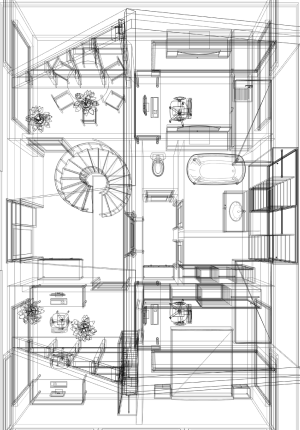How HVAC Design Contribute to LEED Standards

In a world increasingly focused on sustainability and environmental responsibility, LEED (Leadership in Energy and Environmental Design) certification has emerged as a beacon of green building excellence. Beyond its fundamental role in promoting sustainable practices, LEED certification offers a myriad of benefits, influencing everything from energy efficiency to marketability and global recognition.
LEED stands for Leadership in Energy and Environmental Design. It’s a certification program for green building, promoting sustainable practices in design, construction, and operation. Buildings achieving LEED certification adhere to specific environmental criteria, covering areas like energy efficiency, water conservation, materials selection, and indoor air quality.
HVAC (Heating, Ventilation, and Air Conditioning) design significantly impacts LEED certification. Efficient HVAC systems contribute to energy savings and improved indoor environmental quality, both crucial aspects for LEED. Proper design can earn points in areas like energy performance, optimizing energy use, and reducing greenhouse gas emissions. It also plays a role in achieving credits related to thermal comfort, ventilation, and air quality, all of which are important criteria in the LEED certification process.
To summarize LEED concepts integrated with standards in HVAC design, here are some key points:
- Energy Efficiency is Key:
HVAC systems must prioritize energy efficiency to meet LEED requirements, contributing to reduced environmental impact and operational costs. Some solutions include integrating renewable energy sources like solar or geothermal systems. Another example is optimizing energy performance which can earn a credit for a company that achieves a minimum level of energy efficiency compared to a baseline building established by ASHRAE standards. Employing a commissioning authority to verify the efficiency and reliability of the performance of the HVAC system also earns a credit.
- Indoor Air Quality Matters:
HVAC design should prioritize ventilation and pollutant control to meet LEED standards for indoor environmental quality, supporting the health and well-being of building occupants. Applying other standards from other institutions help in this respect, such as the compliance with ASHRAE Standard 62.1 or the local equivalent for ventilation rates and enhancing indoor air quality by providing additional fresh outdoor air through HVAC systems. Another credit is earned for being able to achieve the ASHRAE Standard 55 Guideline for temperature and humidity for thermal comfort.
- Life-Cycle Thinking in Material Selection:
LEED emphasizes considering the life-cycle environmental impact of materials, including those used in HVAC systems, promoting sustainability beyond initial construction. This can usually be done through a life-cycle assessment (LCA) to evaluate the environmental impacts of building materials, including those used in HVAC systems.
- Innovation Recognition:
HVAC professionals can earn LEED credits by implementing innovative strategies and technologies, showcasing a commitment to pushing the boundaries of sustainable design in heating, ventilation, and air conditioning.
- Other Advantages of Being LEED-certified:
Buildings with LEED certification are recognized for their commitment to sustainability. HVAC professionals working on LEED projects contribute to the overall green building initiative, enhancing their reputation and marketability in the industry. Moreover, LEED-certified buildings typically have higher market values. HVAC professionals contributing to LEED projects add value to the building by incorporating energy-efficient and sustainable HVAC solutions, making the property more attractive to investors and tenants.
LEED-certified buildings often align with or exceed existing regulatory requirements. By proactively incorporating sustainable practices into design and construction, these buildings mitigate the risk of future changes in environmental or energy-related regulations. This not only ensures ongoing compliance but also future-proofs structures against potential challenges arising from evolving legal landscapes.
Some regions offer financial incentives or rebates for LEED-certified projects. HVAC professionals involved in such projects may benefit from these incentives, creating additional cost savings for both clients and themselves.
Participation in LEED projects positions HVAC professionals as contributors to global sustainability efforts. It aligns with the growing demand for environmentally conscious design and construction practices, showcasing leadership in the industry.
Understanding and addressing these credits during the design and construction phases can significantly contribute to earning LEED certification. HVAC professionals and designers play a crucial role in meeting the specific requirements outlined in these categories to crease a sustainable and energy-efficient homes or buildings.
In conclusion, LEED certification is not just a symbol of sustainable building practices. It represents a comprehensive approach to creating structures that are environmentally responsible, economically viable, and socially beneficial. From energy efficiency to marketability and community impact, the benefits of LEED certification resonate across various dimensions, making it a cornerstone in the global pursuit of a sustainable future. As builders, developers, and professionals increasingly embrace the green revolution, LEED stands as a guiding light, illuminating the path towards a more sustainable and resilient built environment.
Ready to take your HVAC design to the next level of sustainability? We’ve got you covered! Reach out to us at [email protected] for expert assistance in creating more sustainable and efficient spaces.


